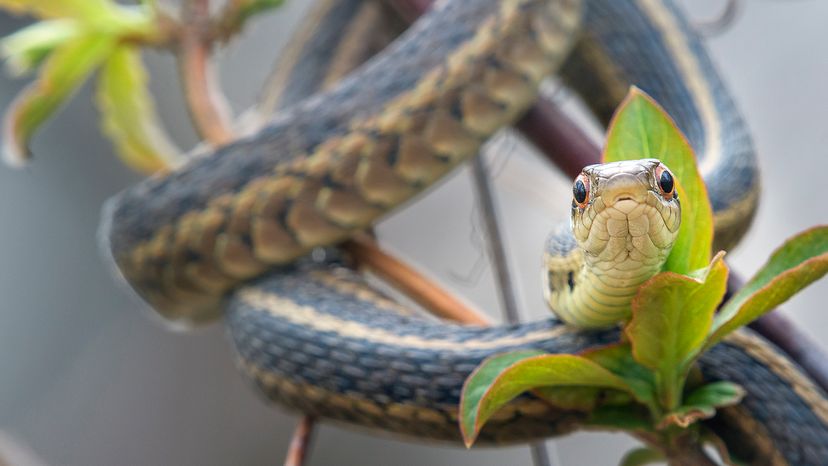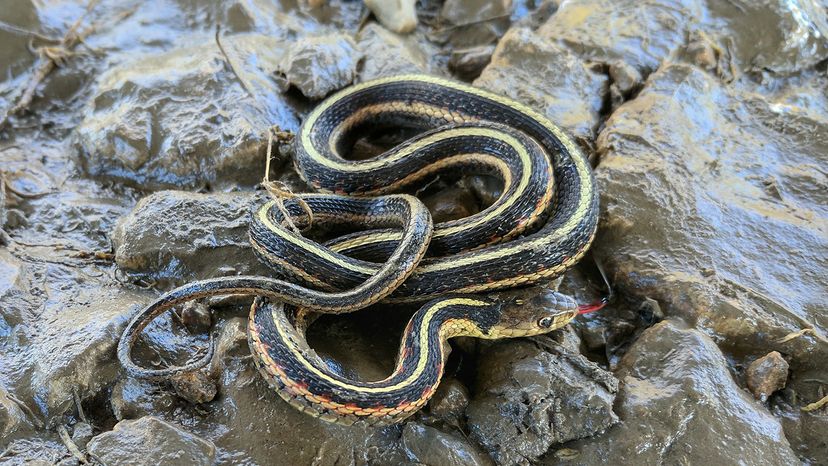
If you live anywhere in North America, chances are you've seen a garter snake (sometimes referred to as a garden snake) slithering past. For many, such a sight might cause a flinch or scream or; for a curious few, it spurs the need to get closer. If you're in the latter category, be careful.
Many garter species can be identified by three light stripes along their back which are yellow or orange in color, along with a sleek black body. While garters are relatively harmless, if you pick one up, it may try to defend itself with a bite — a relatively harmless bite, but a nip nonetheless. It will also struggle and emit a foul smell from its anal gland.
Advertisement




